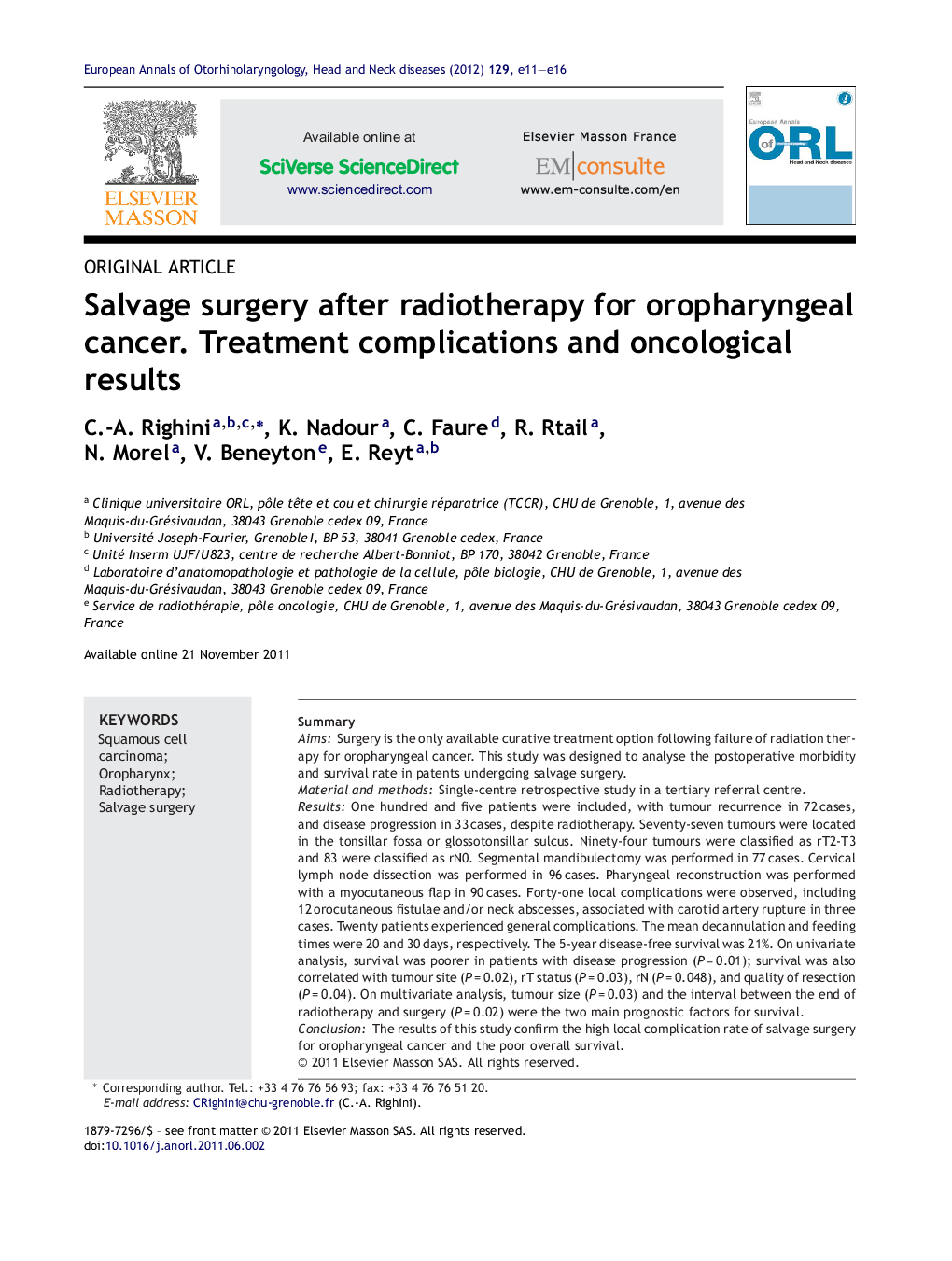| Article ID | Journal | Published Year | Pages | File Type |
|---|---|---|---|---|
| 4110358 | European Annals of Otorhinolaryngology, Head and Neck Diseases | 2012 | 6 Pages |
SummaryAimsSurgery is the only available curative treatment option following failure of radiation therapy for oropharyngeal cancer. This study was designed to analyse the postoperative morbidity and survival rate in patents undergoing salvage surgery.Material and methodsSingle-centre retrospective study in a tertiary referral centre.ResultsOne hundred and five patients were included, with tumour recurrence in 72 cases, and disease progression in 33 cases, despite radiotherapy. Seventy-seven tumours were located in the tonsillar fossa or glossotonsillar sulcus. Ninety-four tumours were classified as rT2-T3 and 83 were classified as rN0. Segmental mandibulectomy was performed in 77 cases. Cervical lymph node dissection was performed in 96 cases. Pharyngeal reconstruction was performed with a myocutaneous flap in 90 cases. Forty-one local complications were observed, including 12 orocutaneous fistulae and/or neck abscesses, associated with carotid artery rupture in three cases. Twenty patients experienced general complications. The mean decannulation and feeding times were 20 and 30 days, respectively. The 5-year disease-free survival was 21%. On univariate analysis, survival was poorer in patients with disease progression (P = 0.01); survival was also correlated with tumour site (P = 0.02), rT status (P = 0.03), rN (P = 0.048), and quality of resection (P = 0.04). On multivariate analysis, tumour size (P = 0.03) and the interval between the end of radiotherapy and surgery (P = 0.02) were the two main prognostic factors for survival.ConclusionThe results of this study confirm the high local complication rate of salvage surgery for oropharyngeal cancer and the poor overall survival.
